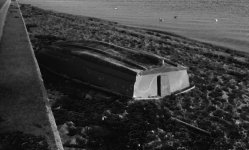Suse
Member
Hi
I bought an M2 and a 50 crom from two separate sellers. Sadly. I wasn't happy with the body from the start, I'd had the wrong rangefinder lines come up on lens attachment. Some of the last test roll I shot were truly awful, and I'm now wondering whether the lens is ok - or whether this is just the camera.
I don't think it was from scanning, because the same problem comes up on another shot in the same batch of beach shots, and no where else. I don't know what this horrible painting effect is - could it be the film, or possibly just bad shooting technique on my part? In my defence I'd like to add I've shot film for years and never had anything like this...! It was developed in Ilfotec DD-X. Most of the other shots on the roll
did not have this.
I bought an M2 and a 50 crom from two separate sellers. Sadly. I wasn't happy with the body from the start, I'd had the wrong rangefinder lines come up on lens attachment. Some of the last test roll I shot were truly awful, and I'm now wondering whether the lens is ok - or whether this is just the camera.
I don't think it was from scanning, because the same problem comes up on another shot in the same batch of beach shots, and no where else. I don't know what this horrible painting effect is - could it be the film, or possibly just bad shooting technique on my part? In my defence I'd like to add I've shot film for years and never had anything like this...! It was developed in Ilfotec DD-X. Most of the other shots on the roll
did not have this.
Attachments
Last edited:




